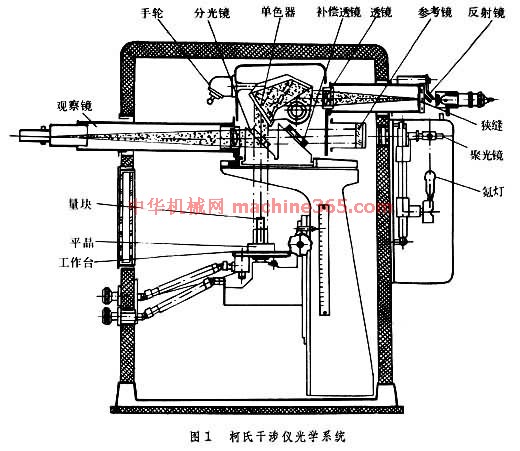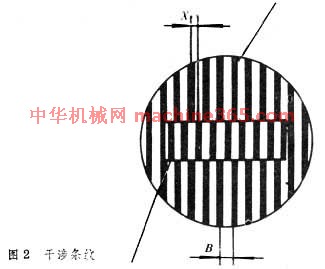1) auscultatory method
柯氏音法
1.
This paper introduces and compares several blood pressure measurements, among which two noninvasive blood pressure measurements based on oscillometric and auscultatory methods are mainly compared.
使用振动法无创伤血压测量监护仪和柯氏音听诊法对样本人群进行了血压测量,分析所得数据,结果表明,基于振动法和柯氏音法无创血压测量仪测量值差异小,准确性也比较好。
2) KESHI gas mass
柯氏气团
1.
Based on the mechanism of forming the LUDERS slip, think of the exist of KESHI gas mass as the basic reason of forming the LUDERS slip.
论述了吕德斯带的形成机理,认为柯氏气团的存在是产生吕德斯带的根本原因。
3) cosmid
柯氏质粒
1.
In the construction, the target fragment of hCbfa1 cDNA was first inserted into cosmid PaxCAwt and then cotransferred into 293 cells with adenovirus gene DNA TPC (Terminal Protein Complex) by means of homologous recombination to construct the recombinant adenovirus vector.
将hCbfa1的cDNA目的片段插入腺病毒柯氏质粒PAxCAwt中,再将此质粒与腺病毒DNA末端蛋白复合物共转染293个细胞,通过同源重组构建hCbfa1重组腺病毒载体。
4) Keshi Model
柯氏模型
1.
Starting with the problem existing in the assessment of enterprise training at present,this paper discusses the problems existing in the training exploration and analyzes the "Keshi Model".
从现今企业培训评估中存在的问题入手,讨论了培训开发中存在的问题,并对"柯氏模型"进行了分析讨论。
5) Korotkoff sounds
柯氏音
1.
There is abundant information about the cardiovascular situation in the Korotkoff Sounds, if analyzing this information well, it can be used to check the health status of the cardiovascular system.
柯氏音中含有丰富的心血管信息,如果充分利用这些信息,可以对人体心血管系统的工作状态和健康状况进行全面的诊断。
6) Coriolis Force
柯氏力
1.
Because there exist the action of Coriolis Force and some differences in geologic conditions,the reach developed from a tiny bending river to an asymmetric and abnormal meandering river.
认为由于柯氏力的作用以及地质条件的差异 ,使该河段既有一般蜿蜒性河道演变规律 ,又有不对称、非规则演变特性。
2.
The relation among the deviation of landing point, latitude and emission angle is discussed considering the effect of Coriolis force on the guided missile.
考虑地球自转时,定量讨论了导弹在柯氏力作用下,弹着点的偏差与纬度及发射角的关
3.
Through inputting known parameters,we found that once the Coriolis force combined with the stratification of the lake,it not only determined the direction of the river water,but also seemed to affect greatly the steady state pattern of the flow.
通过输入已知参数结果表明:纳木错湖周边山水(河水)流入湖泊之后,在柯氏力[2]和湖水分层[3]的影响下,所有流入湖泊的河水沿着湖岸呈逆时针方向循环流动;循环周期约需要60天左右;河水首尾相连后继续沿着湖岸按逆时针方向均匀流动且朝着湖心聚集;河水在湖中的水平分布不仅受柯氏力的影响同时也受湖水分层的影响。
参考词条
补充资料:长度测量工具:柯氏干涉仪
以氪光或氦光的波长作为已知长度﹐利用光波干涉现象(见激光测长技术﹑平晶)和小数重合法检定量块的高精度长度测量工具。在柯氏干涉仪上测得的是相当於量块全长的干涉条纹总数中的小数部分﹐所以需要利用小数重合法求出量块全长。先用允许误差小於 1微米的长度测量工具测出量块的量值﹐并计算出变动范围(例如在98.123~98.124毫米之间)﹐然后在柯氏干涉仪上用同一光源中3~6种不同谱线的波长分别测量﹐以取得3~6个不同小数的干涉条纹﹐再利用专用计算尺或图表﹐找出在上述尺寸范围内与这几个小数值都能适应的尺寸作为量块的全长。
柯氏干涉仪是德国人W.柯斯特尔大约於1923年设计的﹐於 1927年製成。用绝对测量法测量的精确度可达 微米﹐L 为被测长度(毫米)。
微米﹐L 为被测长度(毫米)。
图1 柯氏干涉仪光学系统 为柯氏干涉仪光学系统的光路。由氪灯发出的光线经聚光镜﹑反射镜﹑狭缝和透镜后成为平行光﹐又经色散棱镜组(也称单色器)分光成为红﹑黄﹑黄绿和紫色4种谱线的单色光(氦光能分为6种谱线的单色光)。单色器是可以转动的﹐随转动后角度的变化﹐上述4种单色光分别进入干涉场。单色光由分光镜分为两路﹕一路透射到量块和平晶测量面上﹐再反射回来﹔一路反射后经补偿透镜由参考镜反射回来。这两路光在分光镜上会合。这两路光的光程差產生两组干涉条纹(图2 干涉条纹 )。
为柯氏干涉仪光学系统的光路。由氪灯发出的光线经聚光镜﹑反射镜﹑狭缝和透镜后成为平行光﹐又经色散棱镜组(也称单色器)分光成为红﹑黄﹑黄绿和紫色4种谱线的单色光(氦光能分为6种谱线的单色光)。单色器是可以转动的﹐随转动后角度的变化﹐上述4种单色光分别进入干涉场。单色光由分光镜分为两路﹕一路透射到量块和平晶测量面上﹐再反射回来﹔一路反射后经补偿透镜由参考镜反射回来。这两路光在分光镜上会合。这两路光的光程差產生两组干涉条纹(图2 干涉条纹 )。 这两组干涉条纹间的偏移距离X 和干涉条纹宽度B 的比值﹐即为量块全长干涉条纹总数的小数部分。利用小数重合法即可得出量块全长的尺寸。上述测量方法属於绝对测量﹐因此有人又称柯氏干涉仪为绝对光波干涉仪。此外也可用相对法测量﹐即测出被测量块与高一“等”量块的差值。柯氏干涉仪的最大量限为125毫米(绝对法)和200毫米(相对法)。当採用双参考镜法时﹐则可测量到1000毫米。由於光波波长是按真空条件或标準状态(见激光干涉仪)计算的﹐故需要根据测量时的温度﹑湿度和大气压力等进行空气折射率修正﹐以保证测量精确度。
这两组干涉条纹间的偏移距离X 和干涉条纹宽度B 的比值﹐即为量块全长干涉条纹总数的小数部分。利用小数重合法即可得出量块全长的尺寸。上述测量方法属於绝对测量﹐因此有人又称柯氏干涉仪为绝对光波干涉仪。此外也可用相对法测量﹐即测出被测量块与高一“等”量块的差值。柯氏干涉仪的最大量限为125毫米(绝对法)和200毫米(相对法)。当採用双参考镜法时﹐则可测量到1000毫米。由於光波波长是按真空条件或标準状态(见激光干涉仪)计算的﹐故需要根据测量时的温度﹑湿度和大气压力等进行空气折射率修正﹐以保证测量精确度。
柯氏干涉仪是德国人W.柯斯特尔大约於1923年设计的﹐於 1927年製成。用绝对测量法测量的精确度可达
 微米﹐L 为被测长度(毫米)。
微米﹐L 为被测长度(毫米)。 图1 柯氏干涉仪光学系统
 为柯氏干涉仪光学系统的光路。由氪灯发出的光线经聚光镜﹑反射镜﹑狭缝和透镜后成为平行光﹐又经色散棱镜组(也称单色器)分光成为红﹑黄﹑黄绿和紫色4种谱线的单色光(氦光能分为6种谱线的单色光)。单色器是可以转动的﹐随转动后角度的变化﹐上述4种单色光分别进入干涉场。单色光由分光镜分为两路﹕一路透射到量块和平晶测量面上﹐再反射回来﹔一路反射后经补偿透镜由参考镜反射回来。这两路光在分光镜上会合。这两路光的光程差產生两组干涉条纹(图2 干涉条纹 )。
为柯氏干涉仪光学系统的光路。由氪灯发出的光线经聚光镜﹑反射镜﹑狭缝和透镜后成为平行光﹐又经色散棱镜组(也称单色器)分光成为红﹑黄﹑黄绿和紫色4种谱线的单色光(氦光能分为6种谱线的单色光)。单色器是可以转动的﹐随转动后角度的变化﹐上述4种单色光分别进入干涉场。单色光由分光镜分为两路﹕一路透射到量块和平晶测量面上﹐再反射回来﹔一路反射后经补偿透镜由参考镜反射回来。这两路光在分光镜上会合。这两路光的光程差產生两组干涉条纹(图2 干涉条纹 )。 这两组干涉条纹间的偏移距离X 和干涉条纹宽度B 的比值﹐即为量块全长干涉条纹总数的小数部分。利用小数重合法即可得出量块全长的尺寸。上述测量方法属於绝对测量﹐因此有人又称柯氏干涉仪为绝对光波干涉仪。此外也可用相对法测量﹐即测出被测量块与高一“等”量块的差值。柯氏干涉仪的最大量限为125毫米(绝对法)和200毫米(相对法)。当採用双参考镜法时﹐则可测量到1000毫米。由於光波波长是按真空条件或标準状态(见激光干涉仪)计算的﹐故需要根据测量时的温度﹑湿度和大气压力等进行空气折射率修正﹐以保证测量精确度。
这两组干涉条纹间的偏移距离X 和干涉条纹宽度B 的比值﹐即为量块全长干涉条纹总数的小数部分。利用小数重合法即可得出量块全长的尺寸。上述测量方法属於绝对测量﹐因此有人又称柯氏干涉仪为绝对光波干涉仪。此外也可用相对法测量﹐即测出被测量块与高一“等”量块的差值。柯氏干涉仪的最大量限为125毫米(绝对法)和200毫米(相对法)。当採用双参考镜法时﹐则可测量到1000毫米。由於光波波长是按真空条件或标準状态(见激光干涉仪)计算的﹐故需要根据测量时的温度﹑湿度和大气压力等进行空气折射率修正﹐以保证测量精确度。 说明:补充资料仅用于学习参考,请勿用于其它任何用途。